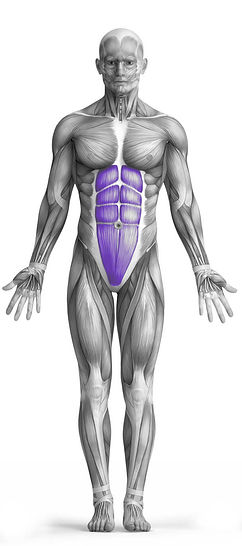Pallof Press 101 Video Tutorial
0

Timer
Hour
Minute
Second
Stopwatch
00:00:00:00
Overview
The Pallof Press is a dynamic and effective exercise primarily targeting the abdominal muscles, while also engaging the shoulders and triceps as secondary muscle groups. This exercise requires the use of an exercise ball or cable apparatus, emphasizing stability and core strength. To perform the Pallof Press, an individual stands perpendicular to the cable machine or anchor point, holding the handle or ball at chest height. With feet shoulder-width apart, the practitioner extends their arms directly in front of them, resisting the lateral force generated by the cable or ball. This anti-rotation movement challenges the core muscles, promoting balance and stability, making the Pallof Press a valuable addition to a well-rounded fitness routine for enhancing abdominal strength and overall functional fitness.
How to Perform
To engage in the Pallof Press, start by adopting a standing stance and connecting a handle to a cable stack at chest height.
Grasp the handle securely against your chest, and establish a stable base with your feet positioned slightly beyond shoulder width.
Execute the exercise by horizontally pressing the handle to full extension while exhaling.
Subsequently, revert to the initial position and replicate the movement for the preferred number of repetitions on both sides.
This dynamic exercise, targeting the abdominal muscles with secondary emphasis on the shoulders and triceps, is amplified when performed with either an exercise ball or cable apparatus. Incorporating this routine enhances not only core strength but also challenges balance and stability, contributing to a comprehensive fitness regimen.
★ Bonus: For exercises that involve external weights (such as dumbbells, barbells, or machines), the One Rep Max (1RM) calculator can help you estimate your maximum lifting capacity. Use it to track your strength progress and adjust your training for optimal results.
Tips
Ensure hip rotation is prevented while extending the handle.
Foster optimal abdominal engagement by exhaling during the press.
Maintain a neutral spinal position throughout the exercise.
If difficulties arise in sustaining lumbo-pelvic control, consider regressing to a supine version before advancing to half kneeling and tall kneeling variations.
Avoid breath-holding during the exercise, as stability should not rely on respiration.
Learn to move while preserving position independent of breath to hone stability.
Ensure the effectiveness of the exercise in targeting the abs, with secondary benefits for the shoulders and triceps.
When incorporating an exercise ball or cable, be aware that the challenge to core strength and stability is heightened, contributing to a more comprehensive workout experience.
How Not to Perform
Avoid Overarching the Lower Back: Maintain a neutral spine throughout the exercise to prevent excessive arching of the lower back. Overarching can lead to lumbar strain and detract from the targeted engagement of the abs.
Resist Hip Rotation: Ensure that the hips remain square and avoid any rotational movement. Rotating the hips can compromise the isolation of the abdominal muscles and diminish the effectiveness of the exercise.
Do Not Hold Your Breath: Refrain from holding your breath during the Pallof Press. Holding the breath may provide a false sense of stability but hinders proper core activation. Instead, focus on controlled breathing, exhaling during the pressing phase to enhance abdominal engagement.
Avoid Jerky Movements: Execute the movement in a controlled and deliberate manner. Jerky or rapid movements can increase the risk of injury and reduce the efficacy of the exercise. Prioritize smooth, controlled motions for optimal results.
Do Not Overlook Foot Position: Maintain a stable base by keeping your feet slightly wider than shoulder-width apart. Neglecting proper foot positioning can compromise overall stability and affect the transmission of force through the core.
Be Mindful of Equipment Placement: If using a cable, be cautious of the cable's path and ensure it aligns with your chest to avoid unnecessary stress on the shoulders and arms. For those incorporating an exercise ball, choose an appropriate size and ensure it is properly inflated to provide stability without sacrificing safety.
Avoid Progressing Too Quickly: If you find it challenging to maintain proper form, resist the urge to progress too rapidly. Master the basic form before advancing to more complex variations. This gradual approach helps build strength and stability while reducing the risk of injuries.
Variations
Variations of fitness exercises refer to different ways of performing a specific exercise or movement to target various muscle groups, intensities, or goals. These variations aim to challenge the body differently, prevent plateaus, and cater to individuals with varying fitness levels.
Alternatives
Alternative exercises in fitness refer to different movements or activities that target similar muscle groups or serve the same training purpose as the primary exercise. These alternative exercises can be used as substitutes when the original exercise is unavailable or challenging to perform due to various reasons such as equipment limitations, injuries, or personal preferences.








